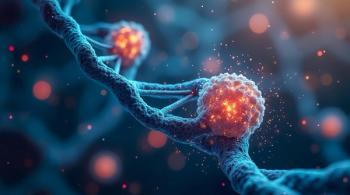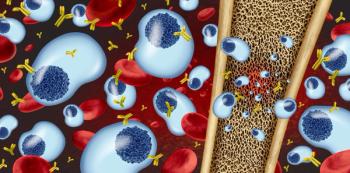Clairity Breast, a novel, image-based prognostic platform designed to predict 5-year breast cancer risk from a routine screening mammogram, has received FDA de novo authorization, advancing precision medicine to transform breast cancer care.1
“For more than 60 years, mammograms have saved lives by detecting early-stage cancers. Now, advancements in AI and computer vision can uncover hidden clues in the mammograms—invisible to the human eye—to help predict future risk,” Connie Lehman, MD, founder of Clairity and breast imaging specialist at Mass General Brigham, said in a news release. “By delivering validated, equitable risk assessments, we can help expand access to lifesaving early detection and prevention for women everywhere.”1
What is an FDA De Novo Authorization?
The de novo classification process provides a risk-based pathway for authorizing novel medical devices that lack a predicate but are considered safe and effective with general or special controls. Once granted, the device is authorized for marketing, must comply with applicable regulatory controls, and may serve as a predicate for future 510(k) submissions; a new classification regulation is established, and the FDA publishes a Federal Register notice, posts the granting order online, and issues a public decision summary. This process is guided by a final FDA rule outlining the format, content, and review criteria for de novo requests under the FD&C Act.3
Personalized Screening With Clairity Breast
Clairity Breast is a mammography-based artificial intelligence (AI) risk prediction platform that assesses the imaging data at the pixel levels to identify individuals at elevated risk of future breast cancer. The results validate a 5-year risk score, which is delivered to health care providers, allowing them to offer a personalized assessment.1
“Personalized, risk-based screening is critical to improving breast cancer outcomes, and AI tools offer us the best opportunity to fulfill that potential,” Robert A. Smith, MD, senior vice president of early cancer detection science at the American Cancer Society, said in a news release. “By integrating AI models that assess individual risk, we can better identify women at higher risk and those who may benefit from supplemental screening methods, such as MRI, improving early detection and more effective prevention strategies.”1
The AI model powering Clairity Breast was trained on millions of images, and the study authors noted that it used more than 77,000 mammograms from 5 diverse screening centers, with results anchored in 5-year outcome data.1
“What makes the availability of CLAIRITY BREAST a true sea change is that we’re now predicting risk of future cancer from patterns in breast tissue, in an otherwise normal screening, before it’s even there,” Jeff Luber, CEO of Clairity, said in a news release. “CLAIRITY BREAST is designed to fit seamlessly into the current clinical infrastructure to help providers scale precision prevention—with the goal of reducing late-stage diagnoses, lowering costs, and saving more lives.”1
Implications for Breast Cancer
The first-in-class platform could address the widespread gaps in breast cancer risk assessment and prevention, as more than 2.3 million new cases of breast cancer are diagnosed annually around the world. This includes around 370,000 cases in the US alone, marking breast cancer as the most common cancer diagnosed in women residing in the US.1,2
Common signs and symptoms of breast cancer include a lump or thickened area in the breast; changes in breast size, shape, or appearance; and a nipple that flattens or turns inward. Skin changes may also occur, such as dimpling, discoloration, or a texture resembling an orange peel. Additional symptoms can include peeling, scaling, crusting, or flaking of the breast skin, according to Mayo Clinic.2
In recent years, breast cancer survival rates have been increasing, and mortality rates have decreased due to advances in breast cancer screening, which allows for early detection. However, advancing screenings even further could demonstrate significantly higher survival rates.1,2
“Clairity’s FDA authorization is a turning point for more women to access the scientific advances of AI-driven cancer risk prediction,” Larry Norton, founding scientific director of the Breast Cancer Research Foundation, said in a news release. “Breast cancer is rising, especially among younger women, yet most risk models often miss those who will develop the disease. Now we can ensure more women get the right care at the right time.”1
REFERENCES
1. ADDING MULTIMEDIA Clairity Becomes the First FDA-Authorized AI Platform for Breast Cancer Prediction – Historic Milestone for Women’s Health. Clairity. News release. June 2, 2025. Accessed June 3, 2025. https://www.businesswire.com/news/home/20250602896762/en/ADDING-MULTIMEDIA-Clairity-Becomes-the-First-FDA-Authorized-AI-Platform-for-Breast-Cancer-Prediction-Historic-Milestone-for-Womens-Health
2. Breast Cancer. Mayo Clinic. News release. January 10, 2025. Accessed June 3, 2025. https://www.mayoclinic.org/diseases-conditions/breast-cancer/symptoms-causes/syc-20352470
3. De Novo Classification Request. News release. October 4, 2022. Accessed June 3, 2025. https://www.fda.gov/medical-devices/premarket-submissions-selecting-and-preparing-correct-submission/de-novo-classification-request#What_is_a_De_Novo_Classification_Request_





















































































































































































































